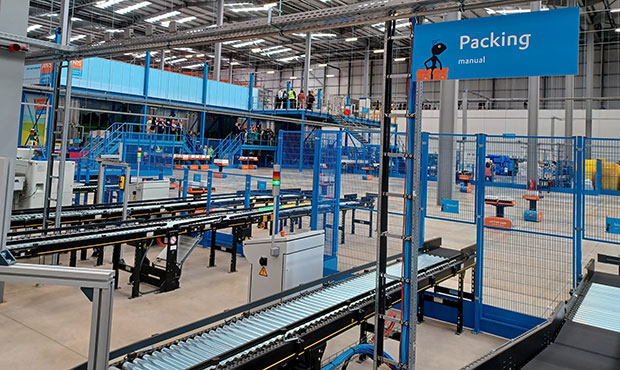My odyssey of 80 warehouse visits, celebrating 80 years of the UK Warehousing Association, has given me the opportunity to reflect on the past: for example when I visited the historic Royal Welsh Warehouse in Newtown. I’ve also been able to celebrate the present, showcasing modern facilities to policy-makers. But what of the future?
 At Linkline in Kettering, Dexory’s high-tech robot has built a digital twin of the warehouse, accessible to customers via an online portal. A wall-to-wall stock-check which used to take hundreds of man-hours can be completed every night by this all-seeing robot. Automating such activities makes the work of the humans safer, faster and crucially more interesting. The robot, named Dextor, can direct people to the hot-spots by exception, allowing humans to do the trouble-shooting they do best, whilst the machine plays to its strengths of speed and accuracy.
At Linkline in Kettering, Dexory’s high-tech robot has built a digital twin of the warehouse, accessible to customers via an online portal. A wall-to-wall stock-check which used to take hundreds of man-hours can be completed every night by this all-seeing robot. Automating such activities makes the work of the humans safer, faster and crucially more interesting. The robot, named Dextor, can direct people to the hot-spots by exception, allowing humans to do the trouble-shooting they do best, whilst the machine plays to its strengths of speed and accuracy.
Nearby, in Northampton, Active Ants has a highly automated distribution centre processing online orders for a wide range of clients and despatching them to consumers. Originating in Holland, this is their first UK site and it was the venue for last month’s Women in Logistics Conference. I combined my attendance at this first-rate event with a warehouse visit, to see the remarkable partnership between software, hardware and people.
The Active Ants are special in a couple of ways. Firstly, their commercial model encourages small clients, by avoiding minimum volume requirements. And secondly their deployment of automated systems is unusual. Active Ants have adopted two scalable hardware solutions: an interoperable cube storage system beautifully branded with orange ants and a flexible fleet of mobile smart conveyors. But they are not using the proprietary software offered by those suppliers, having opted instead to develop their own ‘brain’ to control the automated operations within the warehouse. And as with Linkline, the role of the human remains vital in managing the system and carrying out the tasks which robots cannot accomplish.
Back in 1879, there were no forklift trucks; pallets and containers were not yet widely used in logistics; we did not even have a word for ‘robot’ in the English language! Yet, when he planned the Royal Welsh Warehouse, Pryce Pryce-Jones of Newtown had a vision which modern logisticians would recognise. He wanted to use the technology of the day in innovative ways to create rewarding job opportunities for people in his local community. And so it is with Dextor in Kettering and the robotic Ants in Northampton. As many of my 80 visits have illustrated: in the future, as in the past, we can optimise our operations best when people and machines work hand in hand.




Comments are closed.